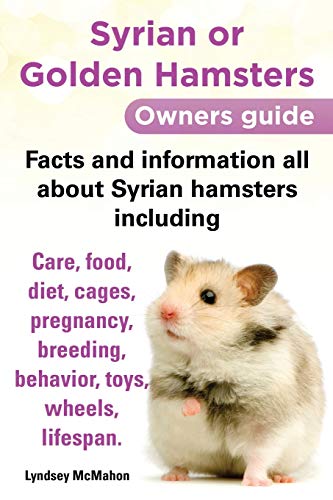Hamster Breed Guide for Owners
As diligent hamster owners, it’s important to understand the different **hamster breeds** available. Each breed has its own unique characteristics, personality traits, and care requirements. This guide aims to provide a comprehensive overview of popular **hamster breeds** that will assist both new and experienced owners in selecting the perfect pet crammed with enthusiasm and charm.
Popular Hamster Breeds
In the world of hamsters, several specific breeds stand out due to their popularity and endearing qualities. Understanding the traits of each breed can help you choose the right companion that meets your lifestyle and expectations. Some of the most common breeds include **Syrian**, **Dwarf Campbell’s**, **Roborovski**, and **Chinese hamsters**. Each breed varies significantly in size, appearance, temperament, and care needs, making it essential to do your research prior to bringing one into your home.
Syrian Hamsters
Syrian hamsters, also known as golden hamsters, are one of the largest hamster breeds, typically weighing between 5 to 7 ounces. They come in various colors and coat varieties, and their larger size often means they have a more docile personality compared to **dwarf hamster breeds**. Syrian hamsters are solitary animals; thus, it’s essential to house them alone. Their sweet and curious nature makes them a favorite among families and first-time owners.

Dwarf Campbell’s Hamsters
A delightful alternative to the larger Syrian hamsters, the **Dwarf Campbell’s hamster** typically weighs around 3 to 5 ounces and features a sociable nature. These hamsters are playful and often enjoy living in pairs or small groups, provided they are properly introduced. They also come in various colors, including agouti, sapphire, and cinnamon, allowing you to pick based on your preferences. The compact size of Dwarf Campbell’s makes them perfect for smaller spaces, and they love interacting with their owners.
Care Requirements for Hamsters
Proper hamster care is essential to ensure a long and healthy life. Regardless of the hamster breed, their environmental requirements, nutrition, and socialization practices should be prioritized. Setting up a suitable habitat, feeding a balanced diet, and allowing for enrichment are a few crucial aspects that will determine your hamster’s quality of life.
Habitat Setup
Creating a comfortable living environment is vital for any **hamster breed**. Begin with an appropriate-sized enclosure; while Syrian hamsters need a minimum of 24 inches long by 12 inches wide, Dwarf hampsters require slightly smaller cages. The cage should be equipped with bedding that absorbs moisture and is safe for chewing, such as aspen or paper-based bedding. Enrichment items like tunnels, exercise wheels, and a variety of toys are essential for your hamster’s physical and mental well-being.
Diet and Nutrition
A well-balanced diet will ensure your hamster thrives. Offer a high-quality hamster pellet or seed mix as the base of their diet, supplemented with fresh fruits, vegetables, and occasional treats. Hamsters require fresh water every day, so placement of a water bottle in their cage is advisable. Avoid giving them sugary or acidic foods, particularly for Dwarf hamster breeds, as it can lead to diabetes.
Understanding Hamster Behavior
Hamsters possess a range of behaviors that can profoundly affect their social interaction. Depending on the breed, some hamsters may display shyness or aggression, while others may be sociable and engaging. Understanding their natural behaviors can improve your bond with them, leading to a more fulfilling pet-owner relationship.
Social Interaction and Training
Each breed reacts differently to socialization. For instance, while Syrian hamsters typically prefer solitude, Dwarf Campbell’s hamsters may enjoy companionship from others of the same breed. Gradually introducing your hamster to handling, starting with short sessions, can help them build familiarity with your presence. Use treats like small pieces of fruit to encourage positive associations during training sessions.
Signs of Stress in Hamsters
Being in tune with your hamster’s behavior goes a long way in ensuring their well-being. Signs of stress may include excessive hiding, biting or aggressive behavior when handled, or becoming lethargic. Knowing these signs can help you identify potential problems and take action to soothe your hamster. Always pay attention to changes in behavior, as they can indicate discomfort or health issues that need addressing.
Key Takeaways
- Different hamster breeds require unique care and attention.
- Creating proper habitats and providing balanced diets are fundamental for hamster health.
- Understanding hamster behavior can significantly enhance your relationship with your pet.
- Each breed has its personality that can influence how you care for them.
FAQ
1. What is the most popular breed of hamster for first-time owners?
Syrian hamsters are often recommended for first-time owners due to their longer lifespan, docile temperament, and availability in various coat types. Their vibrant personalities and relative ease of care make them a popular choice for families.
2. Can Dwarf hamsters live together?
Yes, Dwarf Campbell’s hamsters can thrive in pairs or small groups if introduced properly. Ensuring they have ample space and resources will minimize potential territorial disputes, allowing them to coexist happily.
3. What should I feed my hamster?
A diverse diet should consist of high-quality hamster pellets, fresh fruits and vegetables, and occasional treats. Avoid sugary foods and ensure they have fresh water daily. A balanced diet is crucial for the health of both **Syrian** and **Dwarf hamster breeds**.
4. How can I tell if my hamster is stressed?
Hamsters may exhibit signs of stress, such as aggression, excessive hiding, or lethargy. Monitoring these behaviors helps you identify issues and implement solutions to create a more comfortable environment.
5. Are hamsters nocturnal or diurnal?
Hamsters are primarily nocturnal, which means they are more active during the night. Understanding this behavior can aid you in bonding with your pet by allowing for playtime when they are awake and lively.
This comprehensive guide should equip you with the necessary knowledge on hamster breeds and care to enhance your experience as a hamster owner. Every hamster has its quirks and charm; investing your time and effort into understanding and nurturing your pet will foster a rewarding relationship.
